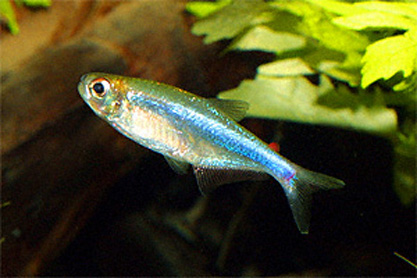| Characidae (Characins; tetras), subfamily: Stevardiinae |
| 12 cm SL (male/unsexed) |
|
benthopelagic; freshwater |
| South America: Andean piedmont of the western and southwestern portions of the Amazon basin in Peru and Bolivia and northwestern portion of the Río de La Plata basin in Argentina. |
|
Dorsal soft rays (total): 10-10. Acrobrycon ipanquianus differs from A. starnesi by having 51-60 perforated lateral-line scales (vs. 61-66), 19-21 horizontal scales rows around the caudal peduncle (vs. 22-26), depth of the body at the dorsal-fin origin 49.0-51.2% of SL (vs. 25.8-31.0%), horizontal diameter of the eye 20.2-29.8% of HL (vs. 30.4-36.5% HL), and interorbital width 29.1-40.2% of HL (vs. 24.6-29.8% HL). It can be diagnosed from A. ortii by having the following characters: 23-27 branched anal-fin rays (vs. 19-21); body depth at the dorsal-fin origin 49.0-51.2% SL (vs. 22.8-37.4%); depth at the dorsal-fin origin relative to the horizontal eye diameter 390-820% (vs. 260-380%); horizontal eye diameter relative to the interorbital width 100-180% (vs. 80-90%); and caudal-peduncle length relative to the body depth at the dorsal-fin origin 240-440% (vs. 160-230%) (Ref. 94771).
Description: dorsal-fin rays ii, 8; anal-fin rays ii- iii, 23-27; pectoral-fin rays i, 9-11; pelvic-fin rays i, 6-7 (Ref. 94771). |
|
|
Least Concern (LC); Date assessed: 22 September 2020 Ref. (130435)
|
| harmless |
|
Known from Departamento Tarija, southern Bolivia (Ref. 38597). Recorded from río Lipeo, west branch of the río Bermejo, Tarija (Ref. 34079). Found in the Amazon basin (Ref. 94771). |
Source and more info: www.fishbase.org. For personal, classroom, and other internal use only. Not for publication.

